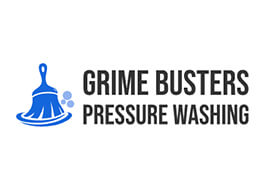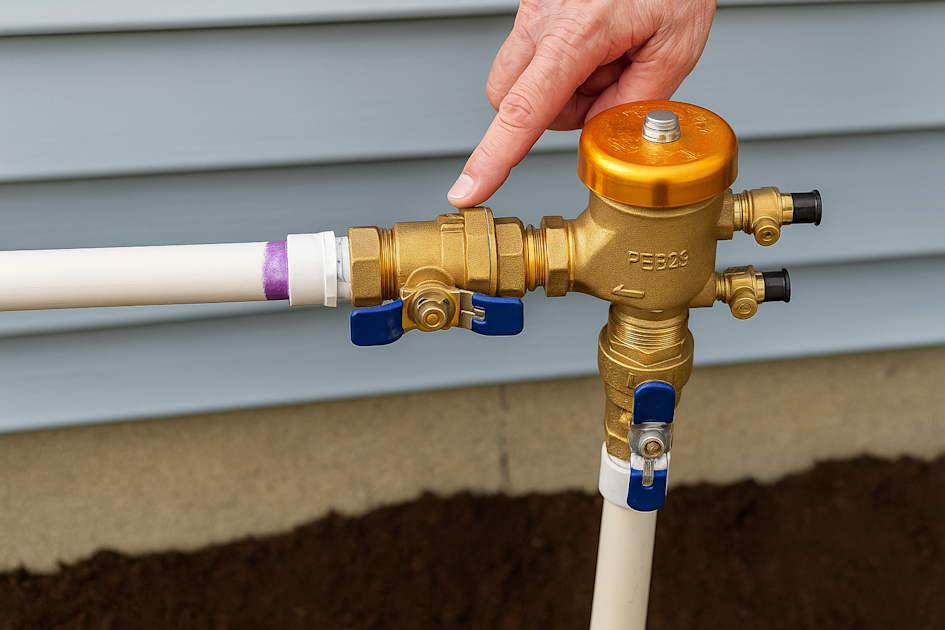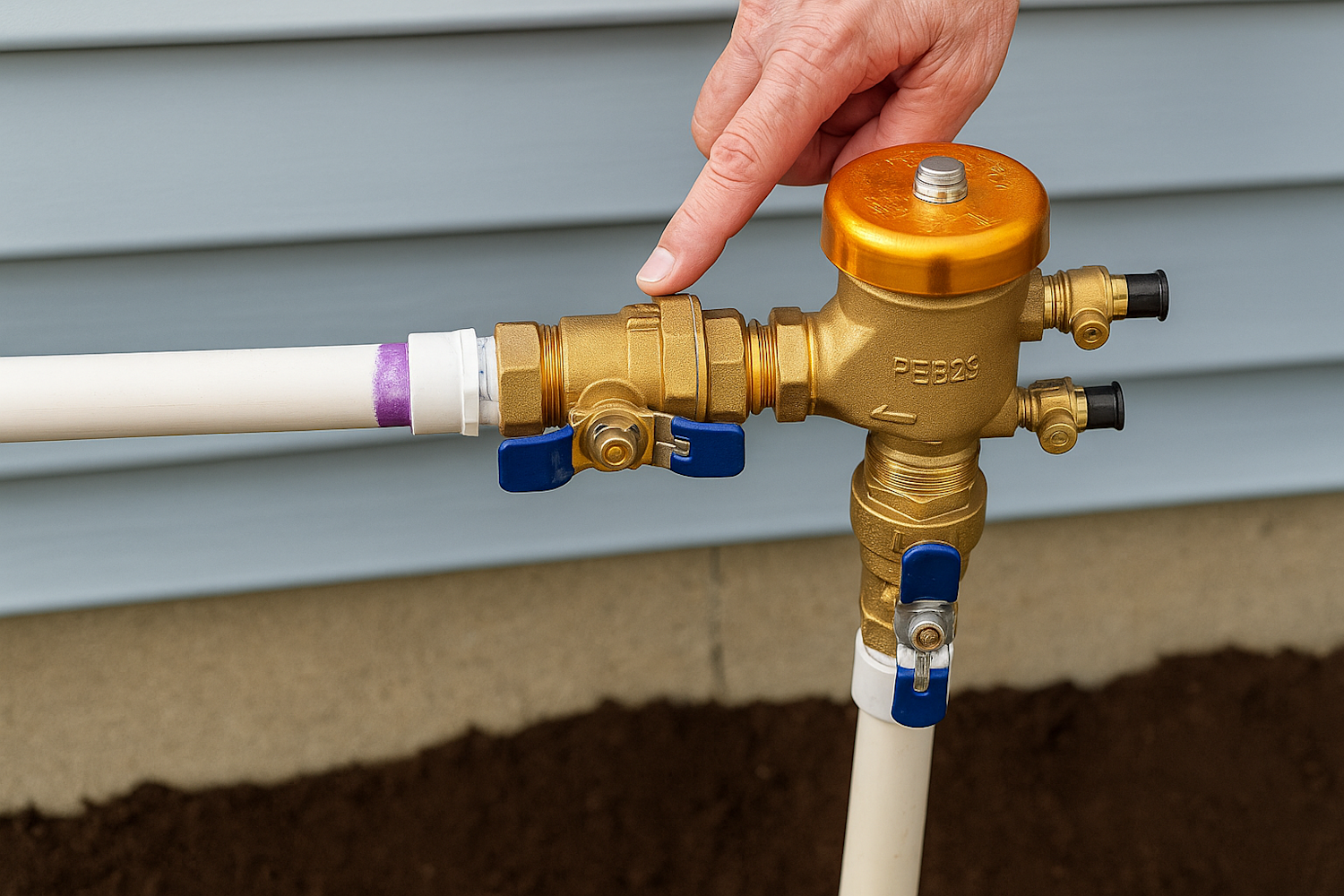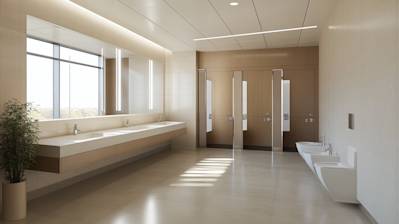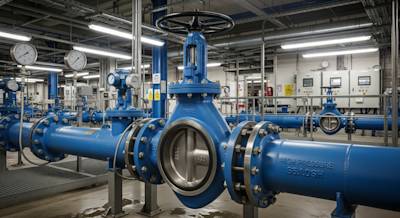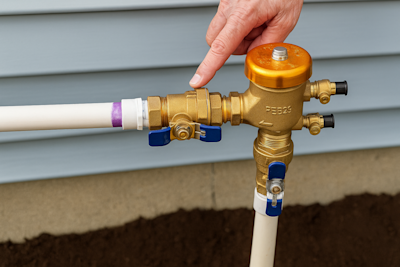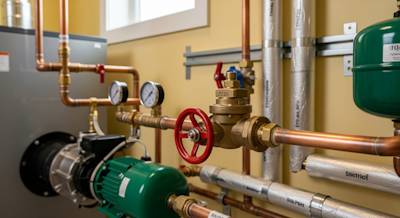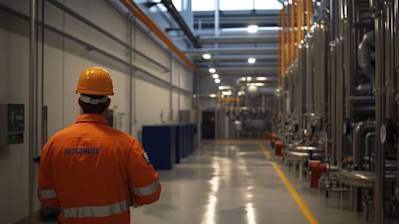The world we live in is complex and filled with technologically advanced systems designed to simplify everyday tasks. Plumbing systems are one of them. Within these networks of pipes, tanks, heaters, and fixtures, there exists a specific feature known as a vacuum breaker. This essential component safeguards your water supply from potentially harmful contaminants. This blog article will take an in-depth look at this critical tool, shedding light on its purpose, different types, and how to install and maintain it.
What Is a Vacuum Breaker?
In a nutshell, a vacuum breaker is a device that prevents backflow or back siphoning of contaminated water into potable water supplies. This anti-backflow device promotes the flow of water in one direction, ensuring that your potable water stays pure and safe.
Understanding the Need for A Vacuum Breaker
Backflow can occur in any plumbing system at any time, potentially contaminating your drinking water with harmful substances or bacteria. Here is where vacuum breakers come to your rescue:
- Preventing Backflows: The primary objective of vacuum breakers is to stop the possibility of backflow, contending with the laws of physics to maintain water safety.
- Guarding Your Health: Clean water is a basic human need, and vacuum breakers help ensure your access to pure, contaminant-free water.
- Compliance with Law: Most cities and municipalities require the installation of vacuum breakers to comply with local plumbing codes or standards.
Different Types of Vacuum Breakers
There are several types of vacuum breakers available in the market. The three main types are:
Atmospheric Vacuum Breaker (AVB): This common type uses air to break the vacuum and prevent backflow. You will typically find AVBs in garden hoses, pull-out faucets, and commercial sink faucets.
Pressure Vacuum Breaker (PVB): These are often installed on irrigation systems. PVBs use air pressure to hinder backflows.
Spill-Resistant Pressure Vacuum Breaker (SPVB): These are similar to PVBs but have a unique design that resists spillage.
(Keep in mind that the right vacuum breaker for your home depends on your specific plumbing system and local codes.)
Installing a Vacuum Breaker
While installation might vary depending on the type, here's a general process for installing a vacuum breaker in your home plumbing system:
- Step 1: Locate the appropriate place to install the device. It should be fixed onto a pipe fixture that supplies water.
- Step 2: Use a wrench to screw the vacuum breaker onto the fixture.
- Step 3: After installation, ensure the device is aligned with the direction of the water flow.
- Step 4: Conduct a test to ensure the device is functioning correctly.
Given the specificity of the installation process, it is recommended to hire a professional plumber to ensure proper servicing.
Maintenance of Vacuum Breakers
Just like any other device, vacuum breakers need regular maintenance to function optimally. Here are some maintenance tips:
- Regular Inspections: Inspect your vacuum breakers annually to ensure proper operation and check for any damage.
- Professional Service: If you notice any issues during inspections, bring in a professional. Repairs must be done correctly to guarantee the efficacy of the device.
- Replacement: Vacuum breakers do not last forever. The average lifespan is around 3-5 years, after which you'll need to replace them.
Frequently Asked Questions about Vacuum Breaker
Where are Vacuum Breakers Installed?
Vacuum breakers are typically installed in plumbing systems where there is a risk of backflow. Some common installation areas include outdoor hose connections, laboratory equipment, and on top of high rises or tall buildings to prevent backflow from the gravity-fed water system. They are usually installed at a level higher than all other equipment.
What is the Role of a Vacuum Breaker?
The primary function of a vacuum breaker is to protect water supplies from contamination or pollution due to backflow. When installed properly, vacuum breakers break the vacuum caused by the change in pressure in the water line, thus preventing the potential water backflow from reversing into the clean water supply.
What is the Difference Between a Vacuum Breaker and a Backflow Preventer?
While both serve the similar purpose of preserving clean water supplies, vacuum breakers and backflow preventers are two distinct tools. A vacuum breaker is intended to prevent the formation of a vacuum within a system, thus preventing backflow. On the other hand, a backflow preventer serves a broader purpose - it prevents backflow regardless of whether it is due to a vacuum or some other reason like changes in pressure or temperature.
How is a Vacuum Breaker Tested?
Testing a vacuum breaker is a crucial step to ensure its proper functioning. A common method is to place an air compressor or a vacuum pump on the device, causing a drop in pressure. If the vacuum breaker is functioning correctly, the valve should open, allowing air to enter. The process should be documented by a certified tester.
Can a Vacuum Breaker Be Repaired?
Yes, vacuum breakers can be repaired. However, the process may vary among different makes and models. Some vacuum breakers have removable parts that can be individually replaced, while others may necessitate replacement of the entire unit. It's always recommended to refer to the manufacturer's guidance or seek professional assistance.
Is a Vacuum Breaker Necessary For Every Plumbing System?
In general, it's highly recommended to include a vacuum breaker, especially in areas prone to changes in water pressure that could lead to vacuum formation. They play an essential role in preserving the health and safety of water supplies by preventing water contamination due to backflow.
Pros of Vacuum Breaker
Necessary for Preventing Backflow
A major advantage of a vacuum breaker is the role it plays in preventing backflow. This device is designed to allow air to enter a pipe system when a negative pressure builds up, hence it plays a key role in preventing dirty water from flowing back into a clean water supply. Without a vacuum breaker, there would be a high risk of contamination, which is a serious health concern.
Broadly Applicable
Vacuum breakers can be used in a variety of settings. They can be found in domestic plumbing systems, industrial machinery, sprinkler systems, commercial dishwashers and boil systems among others. This versatility makes them a highly useful component in a broad range of situations.
Easy to Install
Vacuum breakers are typically easy to install. Even though the installation process might vary slightly depending on the specific type of breaker and where it is being installed, the overall process is fairly straightforward. This is a significant advantage for the average homeowner or maintenance worker who might need to install one without professional help.
Cost-Effective
Generally, vacuum breakers are inexpensive to purchase and install compared to the potential cost of dealing with a contaminated water supply. When you consider the potential health risks and associated costs of dealing with water contamination, it is very cost effective to implement this preventative measure.
Cons of Vacuum Breaker
May Not Work Under All Conditions
There are certain circumstances under which a vacuum breaker may not function properly. For instance, if there is not enough of a vertical drop from the vacuum breaker to the highest point of downstream piping, there may not be sufficient gravitational pull to completely drain the system, causing the breaker to malfunction.
Aging and Corrosion
Over time, vacuum breakers can corrode or become worn out, which might lead to failure. Especially for models that are exposed to harsh weather conditions or are in constant contact with water, the risk of corrosion is substantial. Their maintenance and replacement over time can, therefore, be a disadvantage.
Possibility of Incorrect Installation
While vacuum breakers are generally easy to install, they can be installed incorrectly, which would render them ineffective. While this is not a flaw of the device itself, it is still a potential downside as there is always a risk of human error during installation.
Risk of Theft
Finally, some vacuum breakers are positioned on outdoor tap and hose systems and can be easily seen and accessed from outside the property. This makes them vulnerable to theft, especially in areas where metal theft is common.
Restricted Flow
In certain cases, using a vacuum breaker can restrict the water flow, which can affect the efficiency of the entire system. The shape and structure of some vacuum breakers can limit the maximum flow rate possible, which can be a disadvantage in systems that require high water flow rates to operate properly.
Myths / Misconceptions About Vacuum Breakers
Debunking the Most Common Myths
Myth 1: Vacuum Breakers Increase Water Pressure
One of the most common misconceptions regarding vacuum breakers is that they can increase the water pressure in your system. This is inaccurate. Vacuum Breakers are designed to protect your water system from being contaminated, not control or enhance water pressure. They ensure that if there's any sudden pressure drop in your water supply system, no contaminant or pollutant gets sucked back into your water pipes.
Myth 2: All Vacuum Breakers Are the Same
People tend to think that all vacuum breakers are the same, which is a gross misconception. There are different types of vacuum breakers designed for various applications. For instance, the atmospheric vacuum breaker is primarily used in irrigation systems. Pressure vacuum breakers are more versatile and can be used in many types of water supply systems. Lastly, chemigation vacuum breakers are for systems applying agricultural chemicals.
Driving Down Incorrect Concepts
Incorrect Concept 1: Vacuum Breakers Are Not Necessary for Residential Applications
People mostly think that vacuum breakers are required in commercial and industrial facilities only, and not in homes. However, vacuum breakers are essential not only for commercial use but also for residential applications. They play a significant role in protecting drinking water in your homes from backflow contamination.
Incorrect Concept 2: Vacuum Breakers Only Protect Against Backflow
Vacuum breakers do more than just preventing backflow. Besides preventing water from flowing backward, they are designed to prevent siphoning of water too. When there's a sudden drop in pressure, vacuum breakers act immediately to allow air into the system, preventing the siphoning effect.
Understanding the Basics Right
Understanding 1: Vacuum Breakers Do Not Require Routine Maintenance
Unlike other mechanical elements in your water supply system, vacuum breakers do not require frequent maintenance. While it's true that they need less maintenance, it doesn't mean they should be ignored. It's always good practice to periodically check their performance, especially after a sizeable pressure drop, ensuring they are always in optimal working condition.
Understanding 2: Vacuum Breakers Can Be Installed Anywhere in the System
While vacuum breakers are versatile, they cannot just be installed anywhere in the system. There are specific installation requirements for each type. For instance, pressure vacuum breakers should be installed at a minimum height of 12 inches above the highest point of water usage. Not following these guidelines may result in a failing vacuum breaker.
Understanding 3: Vacuum Breakers Are Hard to Install
Another misconception is that vacuum breakers are complicated and hard to install. This isn't necessarily the case. The complexity of the installation process largely depends on the type of vacuum breaker and the nature of the system. In some cases, vacuum breakers can be as easy to install as screwing it onto the faucet.
Misinterpretations and Misconceptions
Misinterpretation 1: Vacuum Breakers Slow Down the Flow Rate
Some people believe that installing a vacuum breaker may reduce the flow rate of the system. In fact, vacuum breakers have no impact on the flow rate. Their primary function is to prevent backflow and not control the flow of water.
Misinterpretation 2: Vacuum Breakers Are Expensive
While it's true that some types of vacuum breakers may be expensive compared to other plumbing parts, their role in maintaining the quality of your water can't be underestimated. Not installing a vacuum breaker when necessary could lead to expensive repairs in the long run due to backflow issues. In the end, the potential cost of not having a vacuum breaker could be far more than the original investment.
Misinterpretation 3: Vacuum Breakers and Backflow Preventers are the Same
Although vacuum breakers and backflow preventers both help in maintaining a clean water supply, they are not the same. Vacuum breakers are a type of backflow preventer but are applied in different scenarios and have certain design specifications. It's essential to understand these differences before installing any of these devices.
Summary
So, yeah, let's wrap this all up. A vacuum breaker is a seriously handy gizmo that protects your water supply from getting contaminated. By guiding water flow in only one direction, it ensures dirty water doesn't backflow into your clean water supply. Next time you're admiring a sprinkler or a dishwasher, remember that there's a vacuum breaker working behind the scenes to keep it all running smoothly.
We have talked a lot about vacuum breakers and their role in our everyday lives. A big shout out to vacuum breakers for saving our water systems from pollution and contamination. Sure, they might seem like small, insignificant devices, but without them, we're looking at serious health hazards. So, appreciate those little guys for making life so much safer.
Last but certainly not least, vacuum breakers deserve some major love for being our silent protectors. They're on a continuous lookout against harmful backflows and silently working to keep us safe. Just like cogs in a machine, vacuum breakers play a critical part in the smooth operation of countless systems. Safe to say, they're really the unsung heroes of a safe and clean water supply.
About KYPD Plumbing
KYPD Plumbing is a trusted and reliable Lexington, KY-based business, known for outstanding plumbing solutions. We're a community-minded organization, offering our customers top-notch services ranging from pipe repairs to plumbing installations. Our team of seasoned and certified plumbers are dedicated to delivering quality work, respecting both your home and your time. At KYPD Plumbing, we believe in making our services accessible, affordable, and responsive to the needs of every Lexington resident. We're not just another plumbing business; we're your neighbors committed to ensuring your homes are safe, and your plumbing needs are well met for a comfortable daily life!
Tags: plumbing, backflow prevention, water supply,
